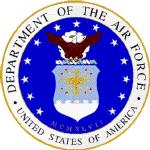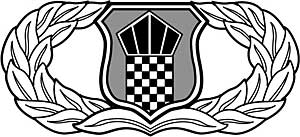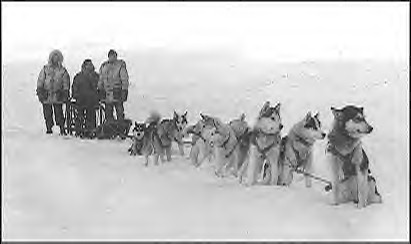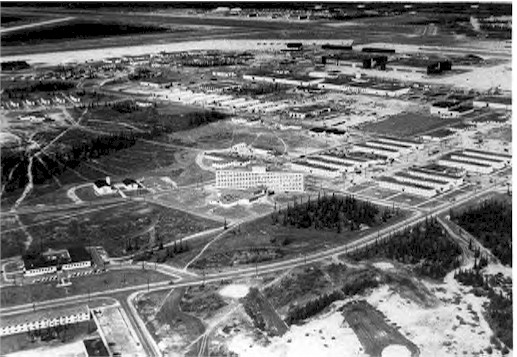
BASIC TRAINING - LACKLAND AFB
Aunt Rita attended basic training at Lackland AFB in 1954. For Aunt Rita this was the excitement of a lifetime, she couldn't wait to get out of the house and go on her own. Her first stop would be in Texas.
She told me once that the chance for her to get out on her own was for her the
adventure that she always dreamed of. She left for basic training in 1954.
Lackland Air Force Base has a
long history it was established on June 26, 1942, during the height of
World War II when the War Department separated part of Kelly Field and names it San Antonio Aviation Cadet Center (SAACC) to support the war effort. From its inception, SAACC witnessed rapid growth and transitioned from a former field training and bombing range through a variety of missions: the hub for flying training, site for the officer training and commissioning orientation, a staging area for all veterans returning from WWII for reassignment or separation, and eventually, established as the basic military training center for officers and enlisted personnel entering the Army Air Forces.
 The story of Uncle John and Aunt Rita is a great story . If not
for Uncle John and Aunt Rita this Coldwar site would probably not be here. Uncle
John has been a constant factor in my life his faith and love have always guided
me throughout my life. He has been an inspiration to me and so as a tribute to
him and my Aunt Rita I dedicate this web page to them. Rita Arruda was the first born and oldest daughter of Anibel and Mary Santos Arruda's seven children. She lived her whole life in Bethel, Connecticut before she joined the U.S. Air Force in the Summer of 1954. She met and Married John Carollo while stationed at the 32nd Air Division at the Syracuse AFB, in Syracuse, NY.
The story of Uncle John and Aunt Rita is a great story . If not
for Uncle John and Aunt Rita this Coldwar site would probably not be here. Uncle
John has been a constant factor in my life his faith and love have always guided
me throughout my life. He has been an inspiration to me and so as a tribute to
him and my Aunt Rita I dedicate this web page to them. Rita Arruda was the first born and oldest daughter of Anibel and Mary Santos Arruda's seven children. She lived her whole life in Bethel, Connecticut before she joined the U.S. Air Force in the Summer of 1954. She met and Married John Carollo while stationed at the 32nd Air Division at the Syracuse AFB, in Syracuse, NY.

Fortunately the base's downhill reputation was checked in 1947 when it was renamed Lackland Air Force Base in honor of Brigadier General Frank D. Lackland. Brigadier General Lackland, a former Kelly Field Commander, had originally proposed and campaigned for an aviation and cadet reception center on this site. Honor as the "Gateway to the Air Force" was secured.
Lackland established itself as a cohesive training base and formalized training evolved to support the Air Force Mission: " To Fly, To Fight, To Win." The basic training and commissioning programs inspired Air Force pride. A technical training group was established to oversee the many courses now taught at on base.
The Korean and Vietnam Wars severely tested Lackland's capacity to train new recruits and satisfy mobility demands. Training populations in the 1950s soared to 55,000, Aunt Rita was one of them. After completion of Basic and Administration training, Aunt Rita enjoyed her time at Lackland however she thought that it would be much more of adventure that it really was.. After only a few weeks she missed her mother and her family. She once told me that she wrote many, many, letters home telling her mother how much she missed home something she thought she would never do. So she selected order close to home because she missed it so much. Little did she know that this decision would change her life forever. She soon left Lackland and reported to her new duty station; the 32nd Air Division at Syracuse AFB in Syracuse NY.
John Carollo
Uncle John left for basic training in January 1954, his first stop was Sampson AFB in Geneva, N.Y. The base was originally built in 1942 as a Naval Training Station, closed at the end of WWII, Sampson was reactivated as a USAF Training Base in 1951, and for six years, until 1956, was alive with young Air Force Men and Women training to serve their country. During that period over 300,000 men received their basic training and another 50,000 men and women were stationed there as permanently assigned. The base closed in 1958, part was given to Seneca Army Depot which also later closed. Uncle John attended The Air Forces’ Basic Training here from January until March 1954.

Uncle John, once graduated from basic, then attended Air Force Training at Keesler AFB. The base opened in 1941, when the city of Biloxi deeded 1,563 acres of land to the government for an Army Air Corps technical training base for airplane and engine mechanics. The base was named in honor or 2nd Lt. Samuel Reeves Keesler Jr., an arial observer from Greenwood, MS, who was killed in action in France during World War I. During World War II, 142,000 aviation mechanics and 336,000 new recruits were trained at Keesler. The majority of the B-24 "Liberator" bomber mechanics were Keesler graduates. Many other schools operated at Keesler during the war, including the B-24 copilot and emergency rescue schools. Women began training there in 1943, as did foreign nationals. Students from more than 50 countries have received aviation, personnel and electronics training at Keesler. After the war, Keesler continued to grow, acquiring courses for helicopter mechanics, supply officers and military police. Also added were schools for air chemical, pre-meteorology, cooks and meat-cutters. The Air Force's radar school relocated from Boca Raton, Fla., in 1947. Two years later, Keesler lost its airplane and engine mechanics school when it was moved to Sheppard AFB, in Texas. That same year, radio operations school moved to Keesler from Scott AFB, Ill. It was at this point Keesler's history became known as the "Electronics Center of the Air Force." During the 1950s, Keesler underwent a massive rebuilding effort, adding the "Triangle" student area, four academic buildings and a new hospital. The Air Force's urgent demand for radio and electronics technicians forced Keesler's schools to operate six days a week.
Communications and control courses moved from Scott AFB in 1958. Evolving from these courses were the ground and airborne communications electronics maintenance and operator training and air traffic control training courses. Meanwhile, the advent of the Semi Automatic Ground Environment (SAGE)air defense system brought digital computer training to Keesler. Uncle John Left Keesler and was transferred to Goose Bay, Labrador which was in Canada.

GOOSE BAY, LABRADOR, CANADA
Uncle John told me that he thought Goose bay was a tropical destination . He decided to go there when a close friend of his convinced him that there is where they should go. He was in for great surprise. Goose Bay was a large US Strategic Air Command (SAC) facility, with more than 16,000 American service personnel and family members living at the base. Goose Bay was established in 1941 as a military and air ferrying base operated by the United States and Canada. By the Goose Bay Agreement of 1944 the U.S. Air Force leased a subsidiary base, also used as a transatlantic refueling stop for Canadian commercial aircraft. Happy Valley, immediately east, served as a residential community for air-base employees. The last American military left Goose Bay in 1991. During the Cold War this area would be a buzz of activity in the defense of freedom and Uncle John Carollo along with tens of thousands of other Americans and Canadians would man all these stations on the ”Roof Of The World.”

click on picture to enlarge
Dog sled team in Labrador
Goose Bay History
The U.S. put forces in Labrador, in late 1940, Newfoundland had granted land to Canada near Goose Bay in Labrador for 99 years. Canada was still a British Colony. The British traded Base Lease rights for the leasing of 50 World War I destroyers during the Second World War. This agreement had also provided that the base which Canada build, would also be made available to U.S. planes for the duration and for such time after as the governments agreed was necessary. The first plane ever to land at Goose came in on 9 December 1941.
At Goose Bay, Labrador, the U.S. forces built complete facilities on the opposite side of the base from the RCAF. The first unit was assigned to the North Atlantic Wing Ferrying Command which on 1 July 1942 became the North Atlantic Wing of the Air Transport Command. The command served throughout WWII as a refueling station for aircraft. By the 1948 the threat of a Russian air attack had created a new need for air defense and caused a new build-up to be started. The next ten years would see a much greater American force in the Northeast area than had been there in the preceding ten years,

Goose Bay AFB
THE NEAC RADAR SYSTEM - "the Dew line"
Most of the NEAC’s heavy radars were part of the stations built throughout Canada under the Canada-United States Radar Extension Plan (known as the Click Here"Pinetree" plan). In early 1950, the Continental Air Command (ConAC), which was responsible for air defense, drew up the first plan. USAF approved this plan, but it hit a cost-sharing snag.
The approved plan provided for a total of 33 radar stations. Ten of these went into the NEAC area. Of the total, America financed 22 stations, Canada eleven. The U.S. also manned seventeen of the American-financed stations. Nine of these seventeen were in the NEAC area. Eight Pinetree stations in other areas of Canada were manned by the Canadian Army); the additional station in NEAC was manned by the Royal Canadian Air Force.
In addition to the ten Pinetree stations located on Canadian soil, three stations were built in Greenland. The ten Pinetree stations consisted of three direction centers and seven early warning stations, four of which had GCI capability. In Greenland, there were two early warning stations and a direction center. An air defense control center was built at Pepperrell AFB. Preliminary work on the above 13 stations, which were called NEAC's permanent system, began on 15 August 1950. ConAC sent a survey party to look at sites in Newfoundland, Labrador, and Baffin Island. USAF authorized the Army Engineers to proceed on 27 March 1951 with design and construction of the sites in these areas.
Click here for more information on NEAC
Aunt Rita's and Uncle John's story continues.